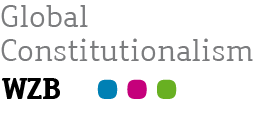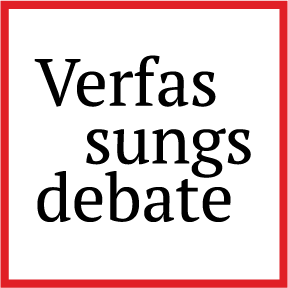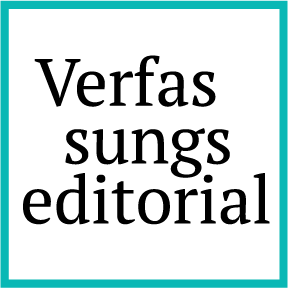Why Australia’s Campaign Finance Reform is Likely to Face Constitutional Challenge
After decades of gridlock on campaign finance reform at the federal level in Australia, the major parties reached a deal to pass the Electoral Legislation Amendment (Electoral Reform) Act 2025 (Cth) on almost the last parliamentary sitting day before a forthcoming election. The new law will not take effect until after the election. It will lower the threshold for the disclosure of donations and ensure disclosures are published more quickly. It will also impose a cap on political donations and a cap on electoral expenditure. This all sounds like a great improvement for transparency and fairness in election campaigning. In theory, it is. So why and how could it be the subject of a successful constitutional challenge?
The problem is that the political deal about the levels of the caps and disclosure threshold, and the means for getting around them have distorted the system in a manner that tilts the playing field considerably in favour of major parties over minor parties and independents, favours incumbents over new entries into the political system, and ensures that undisclosed dark money can still freely flow. That will potentially lead to constitutional problems if the scheme is challenged.
The political context of the reforms
There has been increasing dissatisfaction with the major political parties in Australia. At recent elections, a multi-millionaire, Clive Palmer, and his mining company have spent massive amounts supporting his own United Australia Party and campaigning against the Labor Party. Palmer donated $117 million to the United Australia Party at the previous federal election. His efforts only secured one seat in the Senate, but most likely caused Labor to lose a number of seats.
At the same election, other millionaires supported a fund, Climate 200, which spent $6 million supporting community independent candidates who were in favour of greater action to prevent climate change. This resulted in the Liberal Party losing a number of key conservative seats.
Both the Liberal Party and the Labor Party have a vested interest in reducing the large donations made to minor parties and independents, while maintaining their own flow of donations and supplementing it with public funding. The reforms were therefore calibrated to favour major parties and incumbents and disadvantage independents, minor parties and newcomers.
Disclosures
One of the main selling points for the legislation was the lowering of the disclosure threshold to prevent dark money corrupting the system. It would also require more timely disclosure of donations, with accelerated disclosure immediately before elections. The existing indexed disclosure threshold had almost reached $17,000. It was proposed to lower it to $1000, so that small scale fundraising could still occur without the excessive burden of collecting the details of all contributors. The aim was to eliminate the tens of millions that had previously been collected by the major parties in undisclosed donations, amounting to 45% of party income.
At the last minute, the major parties agreed to raise the disclosure threshold to $5000. This reinstates the flow of dark money, because large donations can still be given by spreading them in parcels of $4999 to each Member, Senator or candidate belonging to a favoured party, as well as to each of its registered branches in the States and Territories and to the various ‘associated entities’ that support it. The upshot is that with a small amount of administrative inconvenience, annual donations of hundreds of thousands of dollars can be made by a donor to support a political party without the donor’s identity being publicly revealed. But the donor is still limited by donation caps.
Donation caps
At the State level in Australia, donation caps were first introduced in New South Wales to remove the risk or perception of corruption or undue influence. The caps were set at $5000, because the $5000 of a millionaire is worth the same as the $5000 of a small business owner, and is not enough on its own to buy influence.
The federal reform proposals originally planned a much higher cap of $20,000, but in the same last minute deal that raised the disclosure threshold, the donations cap was hiked to $50,000. That cap includes a degree of aggregation – so a donor can cumulatively give no more than $50,000 to a party branch or any of the Members, Senators or candidates endorsed by it. However, a donor can also give $50,000 to other registered State or Territory branches of the same party and its federal branch. A donor to a major party which has separately registered branches in each of the six States, two territories and at the federal level, can therefore donate $450,000 a year to the party of its choice.
A donor can also make donations to a party’s ‘associated entities’ (such as fundraising vehicles and business forums) as well as sympathetic third-party campaigners. There is an annual cap for each donor of $250,000, with respect to donations made in a particular State or Territory, and $1.6 million across the entire country. The donor can spend this amount annually. The effect is that very large donations can be made to major parties through spreading them across State and Territory branches. Money can still buy access and influence, and the level of donations to the major parties will not be impeded. An independent, however, can receive no more than $50,000 annually from a particular donor, such as Climate 200.
Expenditure caps
Expenditure caps are intended to bring down the cost of election campaigns and level the playing field between candidates. The expenditure cap set by the new federal law, however, remains very high. It is $800,000 for campaign spending in each electorate, a separate amount for Senate candidates, calculated by reference to the number of electorates in a State or Territory (e.g. $9.2 million for New South Wales and $1 million for Tasmania) and a $90 million overall cap for a political party.
Again, the law is manipulated to suit large parties. A political party that runs candidates in seats across the country is able to shift its $90 million around, so it spends little in a secure electorate and a lot in a marginal one. The $800,000 limit per electorate only applies to ‘targeted advertising’ which names or shows the candidate or the name of the electorate. A political party can still flood the electorate with advertising supporting the party, as long as it doesn’t specify the particular candidate or electorate. The consequence is that in a marginal seat, an independent cannot spend more than $800,000 on their election, but a major political party can spend a lot more on generic party advertising.
Candidates are only permitted to spend on their campaign from money in a specified campaign account. While independents have to rely on money from capped donations or loans, political parties can fill their campaign accounts with unlimited transfers from a ‘nominated entity’, which is a wealthy party fund-raising body. Incumbents also get the advantage of advance public funding flowing into their campaign account based on the public funding they received at the previous election. New candidates and parties get no such payment.
Finally, incumbents are paid large amounts of money for ‘administrative’ purposes, with some campaign costs also being shifted out of ‘electoral expenditure’ and into the category of administration, so that incumbents can cover a greater proportion of their costs from public funding, while new candidates and parties have to rely on donations and loans.
A constitutional challenge?
Australia does not have a constitutionally entrenched bill of rights. However, Australia’s highest court, the High Court of Australia, has recognised an implied freedom of political communication in the Commonwealth Constitution. It is derived from requirements in ss 7 and 24 of the Commonwealth Constitution that the Houses of Parliament be directly chosen by the people. The people would be unable to make a direct informed choice if they were denied the ability to engage in free political communication.
If a law effectively burdens the implied freedom, then it will only be valid if it meets two tests. First, it must be for a legitimate purpose that is compatible with the maintenance of the constitutionally prescribed system of representative and responsible government. Second, it must be reasonably appropriate and adapted to advance that legitimate purpose in a manner that is compatible with the maintenance of the constitutionally prescribed system of representative and responsible government. In addressing the latter test, a majority of the High Court has applied a test of structured proportionality, asking whether the law is suitable, necessary and adequate in its balance (Brown v Tasmania (2017) 261 CLR 328).
The High Court has previously held that laws which restrict campaign finance, such as by imposing caps on donations, will burden the implied freedom. They therefore require a legitimate purpose and must meet the proportionality test (Unions NSW v NSW (No 1) (2013) 252 CLR 530). A legitimate purpose may include reducing or removing the risk or perception of corruption or undue influence that may otherwise arise from the making of donations. Another legitimate purpose may be seeking to level the playing field and ensuring that the voices of the disadvantaged are not drowned out by the voices of the rich (McCloy v New South Wales (2015) 257 CLR 178).
The Commonwealth Government claimed that its campaign finance reforms were intended to achieve both these purposes. However, when the provisions are examined, it becomes apparent that the high level of the cap on donations, the level of the disclosure threshold and the ability to spread very large donations in smaller parcels across the nation means that the new law will facilitate the flow of dark money and maintain the risk that donations will buy access, influence and even support corruption. It would be very difficult, therefore, to argue that the law was for the purpose of preventing the risk or perception of undue influence or corruption. It would also be difficult to argue that the provisions of the law were necessary to achieve this purpose or adequate in their balance.
The same problem arises with the argument about leveling the playing field, given that the law is quite deliberately framed to favour large parties with different branches across the country and incumbents over independents and new candidates or parties. In the very first case when the High Court identified the implied freedom – Australian Capital Television v Commonwealth (1992) 177 CLR 106 – one of the reasons that a law which restricted political advertising was struck down was that it favoured incumbents over new parties and candidates.
In the case of Unions NSW v NSW (No 1) (2013) 252 CLR 530, the High Court of Australia addressed the constitutional validity of a New South Wales campaign finance law which appeared to operate in such a way as to disadvantage one political party. The High Court concluded that the relevant provisions were not made for the legitimate purpose of preventing undue influence or corruption and that their actual purpose was ‘inexplicable’ [59]. It politely averted its eyes from the political purpose behind these provisions and struck the law down as invalid in the absence of a legitimate purpose, without needing to consider proportionality.
There is a significant risk that a challenge to some of the provisions of the Commonwealth’s campaign finance reforms would result in the same outcome, with a court striking them down on the ground that they burden the implied freedom of political communication and do not have a legitimate purpose.
Both the Government and Opposition seem to have been conscious of this possible outcome, as they included two interesting provisions in their package of last minute amendments. These provisions say that it is the ‘intention of the Parliament’ that the amendments concerning donations caps and expenditure caps are to operate together and not be severed from each other. Any constitutional challenge will therefore have an ‘all or nothing’ effect in relation to donations and expenditure, potentially leaving only the provisions concerning disclosure standing.
If the forthcoming election results in a hung Parliament, however, there is a fair likelihood that amendments to the campaign finance laws will be negotiated as a condition of cross-bench support for a minority government. So while these reforms have passed, this is only Act 1. They are likely to be affected by future political or judicial decisions.




No comments posted here, and I’m not surprised. As an American who is well aware of the corrupting influence of excessive money in politics, I’ve found the issue does not arouse much interest in my fellow citizens. They don’t understand the detrimental effects, particularly when it comes to anonymous donations, they don’t care or they feel helpless. I was researching your recent legislation because my wife forwarded a meme claiming Elon Musk’s donations (bribes) would be limited to AU $20k per election cycle. I wanted to celebrate (and push) Australia’s patriotic legislation here, but after reading this… I’m disappointed.